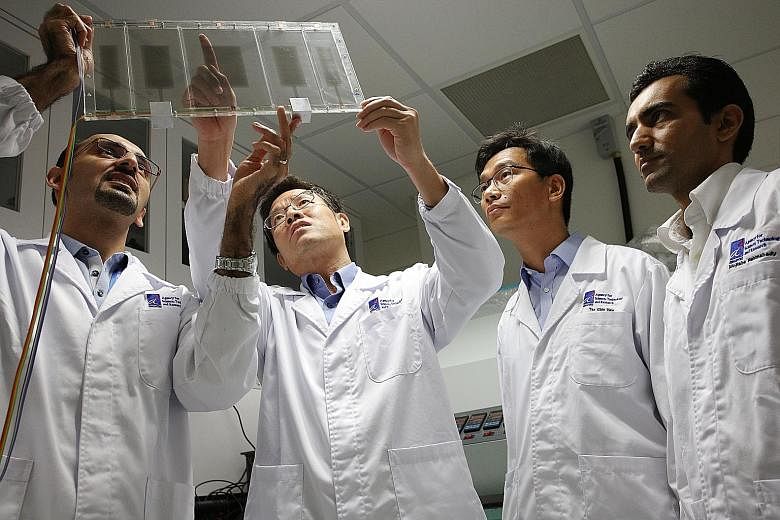A laboratory in one of Singapore's most high-tech districts is the last place you would expect to be serenaded by the great Austrian conductor Herbert von Karajan and the Berlin Philharmonic.
Yet on Tuesday, strains of Richard Strauss' Don Juan flowed from a thin transparent film connected to an iPod when The Straits Times visited the hideout of a team of scientists. The restricted third-floor room in Fusionopolis is cramped with machines festooned with dials and knobs, with wires snaking in all directions.
The team is led by 49-year-old Dr Yao Kui from the Agency for Science, Technology and Research's (A*Star) Institute of Materials Research and Engineering.
They have been working on a transparent film that, when mounted on windows, blocks out unwanted noise and can play music at the same time.
It is the gestating fruit of a collaboration between A*Star, the Housing Board and the National Environment Agency.
Unlike regular speakers, which are set in motion by electromagnets, the A*Star contraption is piezoelectric - it moves in response to changes in electrical voltage.
Made of a polymer strengthened with transparent lamination, the technology uses the same principle as noise-cancelling headphones.
Sound consists of waves that oscillate rapidly between low and high pressure. The film works this way: A signal processor measures these waves 50,000 times a second, analyses them automatically, and commands the speakers to produce similar waves but with one crucial difference. The high-pressure parts of the speaker's waves coincide with the low-pressure parts of the noise and vice versa, a process that does what it is called - destructive interference.
Yet the real breakthrough in the scientists' work is not this.
About 10 years ago, scientists in the United States worked on noise-cancelling windows, but the windows had to be shut to work.
The Singapore team is working on a system which uses a funnel to block out noise while allowing air through. If the system is promising from both the technical and financial standpoints, HDB may study the possibility of implementing it on a wider scale.
Dr Yao is helped by colleagues from A*Star's Institute of High Performance Computing, who run computer simulations of the system.
But the technology is not quite there yet, if you are thinking of bringing the house down with heavy bass and surround sound.
The researcher's thin-film speakers crackle and cannot be throttled up beyond the volume of background music without clipping.
Dr Yao said there is potential for achieving higher-fidelity sound in combination with the kind of technology already found in some flat-screen televisions with thin-film speakers.
The noise-busting musical window is only at the beginning of a long journey.
"There are many factors to consider besides the technology. For example, it is more complicated than a normal window. Are people willing to accept that in their homes?" he said.


